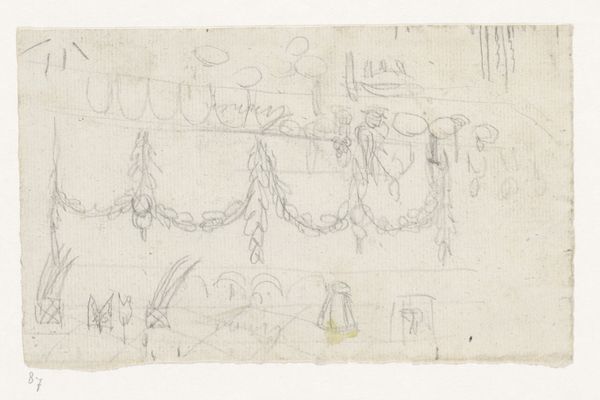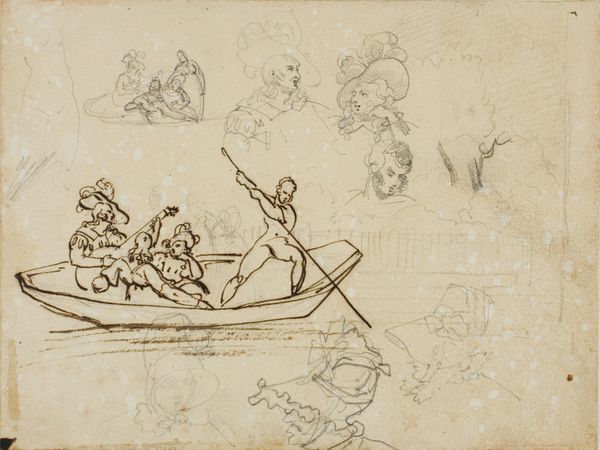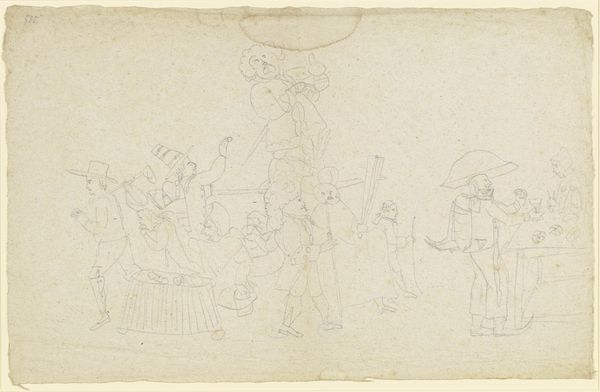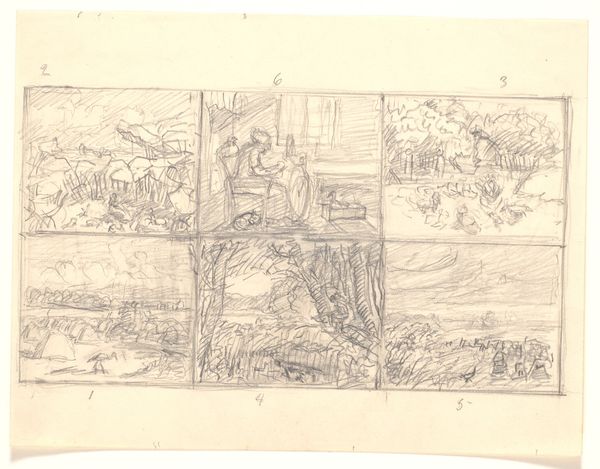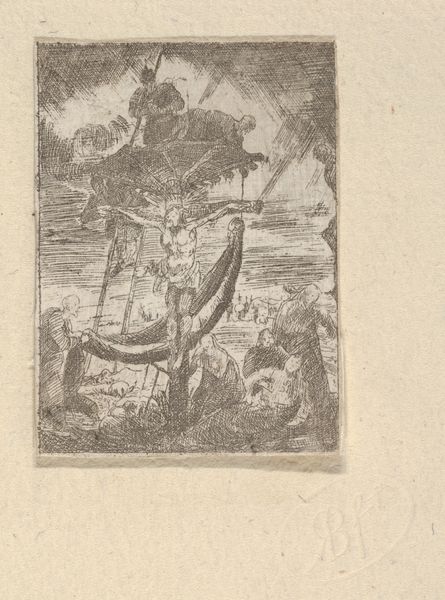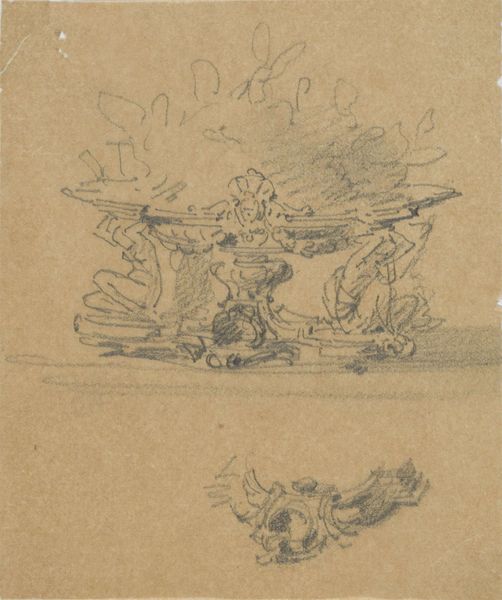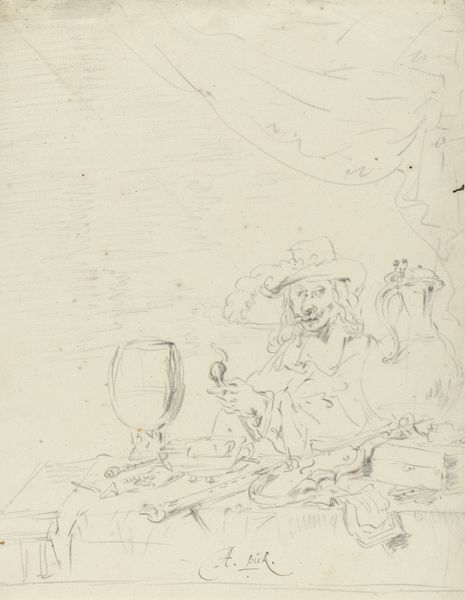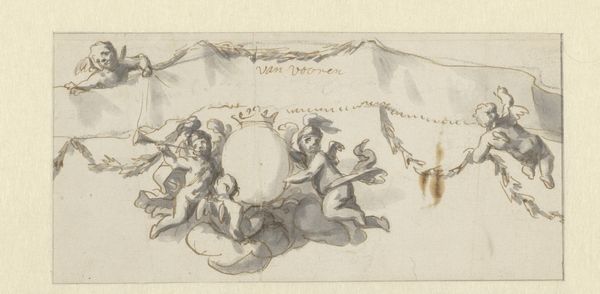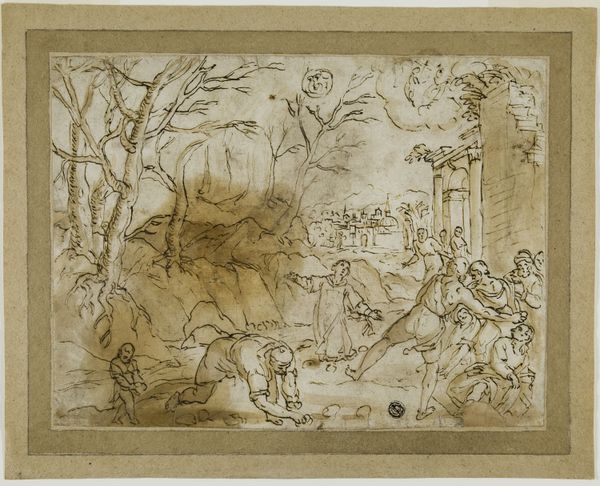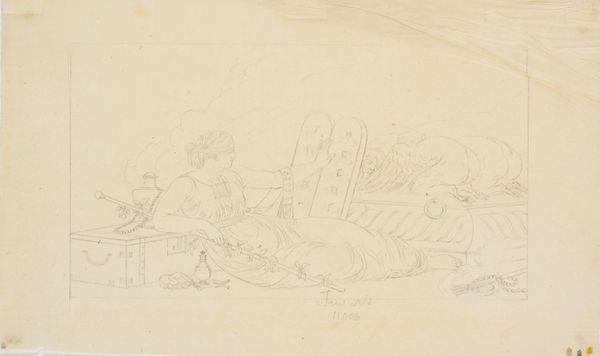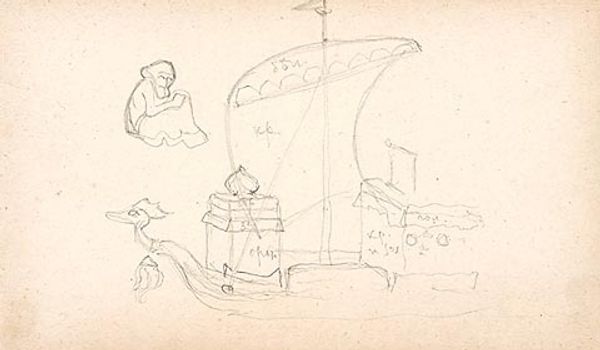
Schets van putti met symbolen met betrekking tot de VOC 1752 - 1819
0:00
0:00
drawing, pencil
#
drawing
#
allegory
#
dutch-golden-age
#
figuration
#
pencil
#
genre-painting
#
history-painting
Dimensions: height 96 mm, width 250 mm
Copyright: Rijks Museum: Open Domain
Curator: Looking at this intriguing pencil drawing by Jurriaan Andriessen, made sometime between 1752 and 1819, titled "Schets van putti met symbolen met betrekking tot de VOC"—Sketch of Putti with Symbols Related to the Dutch East India Company—we are given a glimpse into the visual language of the Dutch Golden Age. Editor: It feels incredibly fragile, almost like looking at a ghost. You can almost sense the pressure of the pencil on the paper. There is this frantic energy of creation in it. Curator: Indeed. This sketch provides valuable insight into the imagery surrounding the VOC, which held immense power during that era. These seemingly innocent putti, cherubic figures, are in fact deeply entwined with the story of trade and colonial expansion. It exposes the cultural institutions built upon that trade. Editor: Precisely! See how the ships are only half rendered. The symbols are almost discarded and are seemingly left scattered, the raw graphite revealing the labor involved in representing the Dutch East India Company and its symbols. The materiality of the drawing, the deliberate act of sketching, reminds us of the complex economic machine driving it. Curator: Absolutely. Note the juxtaposition of these playful figures with objects symbolizing trade and perhaps even conquest. Andriessen is illustrating the close association between innocence and global commerce that often masked a darker, exploitative reality. Editor: But is there also something unfinished? Or, more brutally, is this symbolic of the reality of the actualized project: an abandoned materiality from unrealized dreams and material excess from violent histories. I see a tension here between intended grandeur and actual cost. Curator: That is definitely worth pondering. It challenges us to reflect on how these symbols were used and to whose benefit, questioning the traditional narratives that often glorified such enterprises. Editor: And the labor! We feel the artist’s hand at work. I find that immediacy, even in its unfinished form, powerful. The physical process of creation is itself a vital piece of the story. Curator: Studying pieces like this broadens our understanding of the art and historical context that it existed within, but also allows us to consider present-day legacies. Editor: It makes one consider the labor that has produced this artwork. What does it reflect, and what does it conceal?
Comments
No comments
Be the first to comment and join the conversation on the ultimate creative platform.
